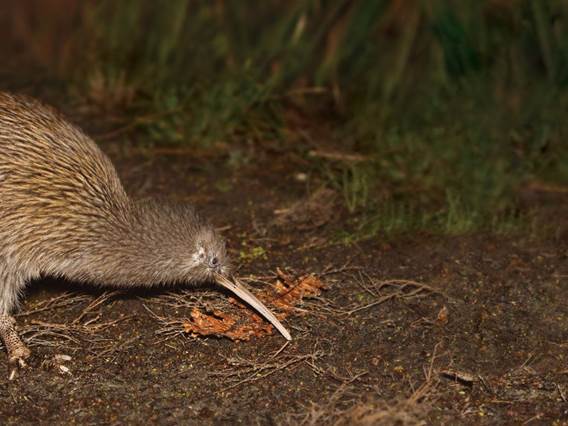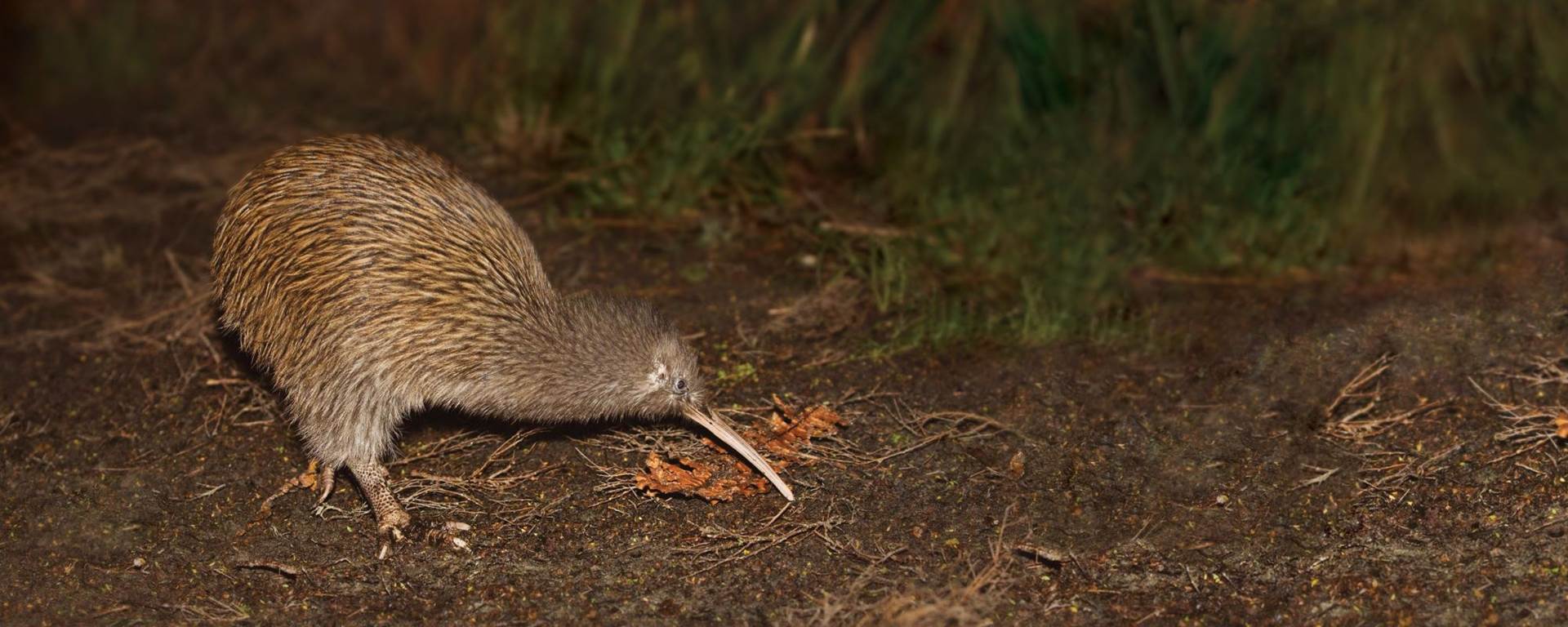This is a one-of-a-kind and best opportunity to encounter the incredible native wildlife of Rakiura Stewart Island. On this experience, you’ll set out to search for marine wildlife and the wild Rakiura tokoeka (southern brown kiwi) with our expert guides.
Our adventures begin 1.5 hrs before the sun sets when you'll head out on a unique nature cruise at sea. Look out for rare marine lifetītī/mutton bird, toroa/albatross, hioho/yellow eyed penguin, kororā/little penguin, kekeno/New Zealand fur seal, and other wildlife from the vessel. Cruise around Stewart Island’s smaller neighbouring islands (weather permitting) under beautiful evening skies with plenty of photo opportunities, before you reach Little Glory Cove as dusk falls, your kiwi spotting location.
Before you disembark into the night, you'll learn about the tokoeka from our incredible guides. We'll take you across the peninsula and through the coastal forest by torch and starlight before arriving at a secluded sandy beach where elusive tokoeka are sometimes found feeding among the grasses and seaweed. Here, the walk will continue under the stars, searching for wild kiwi.
- Includes a 1 ½ hr sea cruise looking for marine life
- Experienced nature guide
- Approximately 2-hour-long guided walk searching for wild tokoeka
- Complimentary hot drinks and biscuits onboard the vessel
- Departure times dependent on sunset
- Total experience duration approx. 4.5 hours
- Suitable for ages 15+
- Due to a late return to Oban, you will need pre-arranged accommodation on Rakiura Stewart Island for that evening
- Not recommended for any persons who struggle to walk independently for more than 1.5km along uneven ground
You have a higher chance of finding kiwis with our expert staff. However, kiwis are wild and unpredictable, and there is no 100% guarantee they will appear. Their rareness and the thrill of searching are what makes the experience special and enjoyable, so we cannot offer refunds if there is no sighting. Instead, $20 per person will be donated to conservation projects at Little Glory Cove, so we can continue to increase the chances of seeing the incredible tokoeka in the wild.




